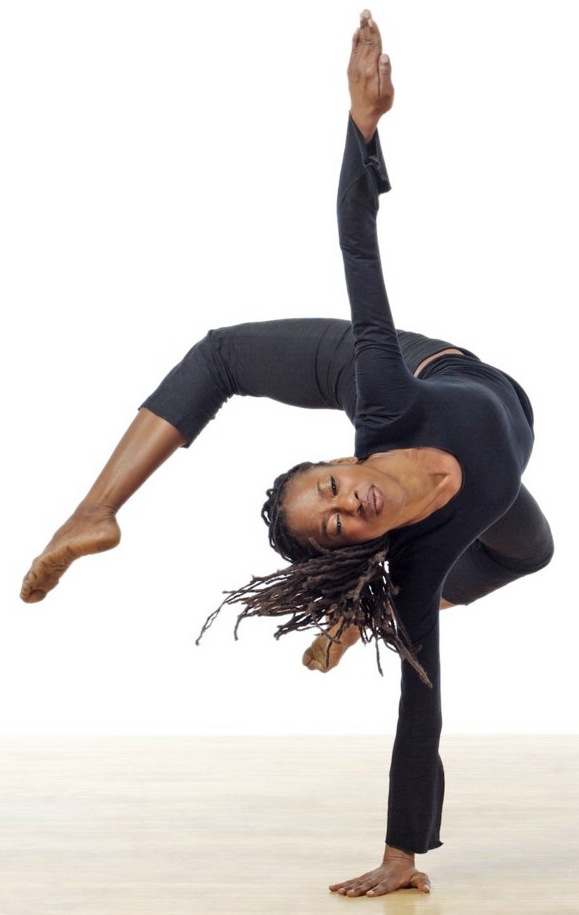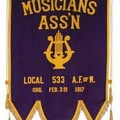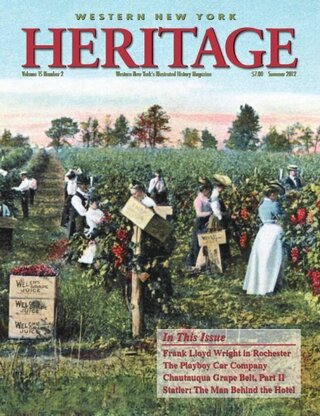
The partially excavated Commercial Slip, as it appears today, with the ruins of several Canal-era buildings in the foreground. The probable location of Dug’s Dive along the Slip is at far right.
Douglas W. DeCroix Photo 2012
The Commercial Slip was once the center of activity in Buffalo. It was a small but vital sluice of water that, because it joined the Buffalo River with the Erie Canal, was our “sacred spot,” the anvil of our early history. This dramatic stage bore witness to the evolutionary drama of our commercial life and, since it was here that so many generations of immigrants disembarked, acted as our Plymouth Rock and Ellis Island. In addition to the well-known Irish and Italian immigrants, African Americans found the Slip and its environs as well. Some, like William Douglas, were former slaves. By the mid-19th century, Douglas had become the proprietor of a notorious subterranean saloon on the north side of the Slip that became known as “Dug’s Dive.” Dug’s operated in the basement of a decrepit building known as the New England block, a place, because many African Americans lived there, known also as “the Negro Block.” While there is no hard and fast evidence that proves this, it’s possible that on and around the Commercial Slip, hanging out secretly at Dug’s Dive and in the grungy rooms of the Negro Block, were runaway slaves who had made their way north to Buffalo. And while, since the passage of the Fugitive Slave Law in 1850, there was no place in the U.S. that escaped slaves could be free, Buffalo was close to freedom, just a short river crossing away from Canada. So it was to the Commercial Slip, the foot of Ferry Street and points further north that runaway slaves came, hoping that from the shores of the Niagara they could launch their final journey to freedom.

New York City dance choreographer Makeda Thomas will present her historically-based work at the Ruins this August.
Matthew Karas Photo
Recently, numerous events and programs have been held around the excavated Commercial Slip and the nearby excavated foundations of several Canal-era buildings, collectively known as “the Ruins.” Though they have little or nothing to do with history, many of these programs arguably do still indirectly bring about awareness of the site’s historical significance, and a unique program slated for this summer seeks to explore one aspect of the site’s history through an unusual medium – interpretive dance.
This August, New York City dance choreographer Makeda Thomas will present a provocative piece titled “Sighting Freedom,” a program of interpretive dance and music thematically focused on the Underground Railroad, as part of Inhabiting Memories: Dance in the Ruins. It will feature two of her company members from New York City and Trinidad, with a supporting cast of gospel singers, musicians and local dancers from Buffalo’s African American community. In Thomas’ piece, the Ruins encompass both the built and the natural environment, where the architectural remains suggest enclosure, or being held captive, whereas the natural environment – the waterway – suggests escape or freedom. The Ruins provide the context for a story that was lived and remains vivid in history. “For some time now,” says Thomas, “I’ve been interested in networks, organic networks like the Underground Railroad – how and why they work; the role of the individual in the health of the network; and the power of silence and secrecy.” Generously supported by the Erie Canal Harbor Development Corporation and the New York State Council on the Arts via the New York State Dance Force, both performances, held on August 18 and 19 at 8 p.m., are free to public. As the medium of interpretive dance would suggest, the program is not designed to be documentary in nature, but does represent an unusual and evocative idea for exploring historic themes and locations through non-traditional methods. As such, it presents the opportunity for an interdisciplinary experience and dialogue: History meets art.









